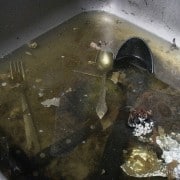5 Signs That it’s Time to Replace Your Home Furnace
A healthy home requires a furnace in good working condition. Do you have a furnace that is causing problems? Is your home heating system more than 20 years old and have you spent money on furnace repairs in the last two years? If you answered yes, it may be time to replace your home’s furnace. For more ways to know if your heating system is on the fritz, check out this list of 5 Signs That it’s Time to Replace Your Home Furnace.
Sign 1: Strange noises from your home furnace
Is your furnace making strange noises like popping, banging and squealing? Old furnaces tend to give out these sounds when they are towards the end of their life. So, if you hear any such noise, it’s probably time to bring in a new one.
Sign 2: Health issues
Is anyone in your family complaining of frequent headaches; burning sensation in their eyes or nose; or nausea and disorientation? If so, some of these symptoms are signs of carbon monoxide poisoning and possibly mean it’s time to replace your furnace. Older furnaces can develop cracks or holes in the heat exchanger, which could emit carbon monoxide gas into the home. In fact, this is a dangerous situation that you should address immediately!
According to Bill Ivey, IEI principal consultant, a gas furnace should be inspected annually by a professional HVAC technician. And if the furnace is over 18 years old, it should be replaced.
Want to know more about how to avoid CO poisoning? Check out our list of facts to help prevent carbon monoxide poisoning.
Image courtesy of Marin at FreeDigitalPhotos.net
Sign 3: Dry or dusty house
If your heating system does not provide adequate moisture or clean air in your house, it may be a sign to replace your home heating system. Excessive dryness affects the walls, furniture and the plants in your house. Also, this extreme dryness can cause problems for you and your family, especially if anyone is allergic to dust or pollen. So, when you see the walls peeling or your plants drooping, it’s probably time to get a new furnace.
Sign 4: Uneven temperature inside your home
Do some rooms feel colder than others? Are you constantly changing your thermostat so you feel more comfortable? These signs may mean your existing heating system is not able to distribute heat evenly through the house, and this is why you are experiencing these problems. If you notice any of these signs, it means you may have an old or faulty system that needs replacing.
Sign 5: Higher heating bills
Is your heating bill much higher than in previous years? The rising cost of gas or electricity is not the only reason for higher heating bills. When your home’s heating system becomes less efficient, it will have to work harder to provide adequate levels of heating. When this happens, your bill is sure to go up. That’s why it makes sense to spend the money to replace your furnace, since over the life of the new furnace you’ll enjoy the benefits of a reduced bill.
Do you see any of these signs? If so, talk to a heating contractor who will recommend whether or not you need to replace your home’s furnace. A replacement will help you save money and enjoy a healthier life! Let us know in the comments below if you’ve faced these problems and what you’ve done to address them!
For furnace maintenance tips, check out the DIY Network. Also, you may want to check out these ways to help get your home ready for winter.
If you need commercial HVAC (heating, ventilation and air-conditioning) consulting, we can help. Check out our HVAC expert consulting services!
Featured image courtesy of Stuart Miles at FreeDigitalPhotos.net.















It’s interesting that a broken furnace could actually affect your plants’ wellbeing. I’ve noticed a few of these things you mentioned such as uneven heating in my house. I had no idea that my plants dying was also caused by that!
When its cold inside and there is no place to go-to warm-up it can be miserable.
Absolutely! Furnaces and boilers can be retrofitted to increase their efficiency. These upgrades improve the safety and efficiency of otherwise sound, older systems. The costs of retrofits should be carefully weighed against the cost of a new boiler or furnace, especially if replacement is likely within a few years or if you wish to switch to a different system for other reasons, such as adding air conditioning.